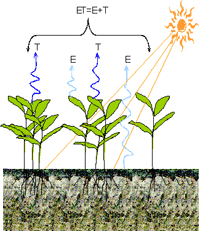Agricultural Research Division of IANR
Date of this Version
2013
Citation
Published in S. L. Young and F. J. Pierce, eds., Automation: The Future of Weed Control in Cropping Systems (2013), pp. vii–viii; doi 10.1007/978-94-007-7512-1_1
Abstract
In both conventional and organic cropping systems, there is an immediate need to apply the latest technologies to improve the efficiency and economics of management while reducing the impacts. Never before has there been such pressure on farmers globally to produce more with less and reduce inputs in cropping systems. The main purpose of this book is to provide the current state of automation for weed control in cropping systems, which demonstrate how being more precise in our applications is possible now and into the future.
To date, no other resource exists on this important and rapidly advancing topic of automated weed control. In the near future, a new approach will be needed for managing weed pests, especially with the challenges of weed resistance to herbicides; off-site movement of soil, fertilizers, and chemicals; an increasingly non-agrarian public; labor shortages; economies in recession; and the continued rural to suburban land use conversion.



Comments
Copyright © 2014 Springer Science+Business Media Dordrecht. Used by permission.